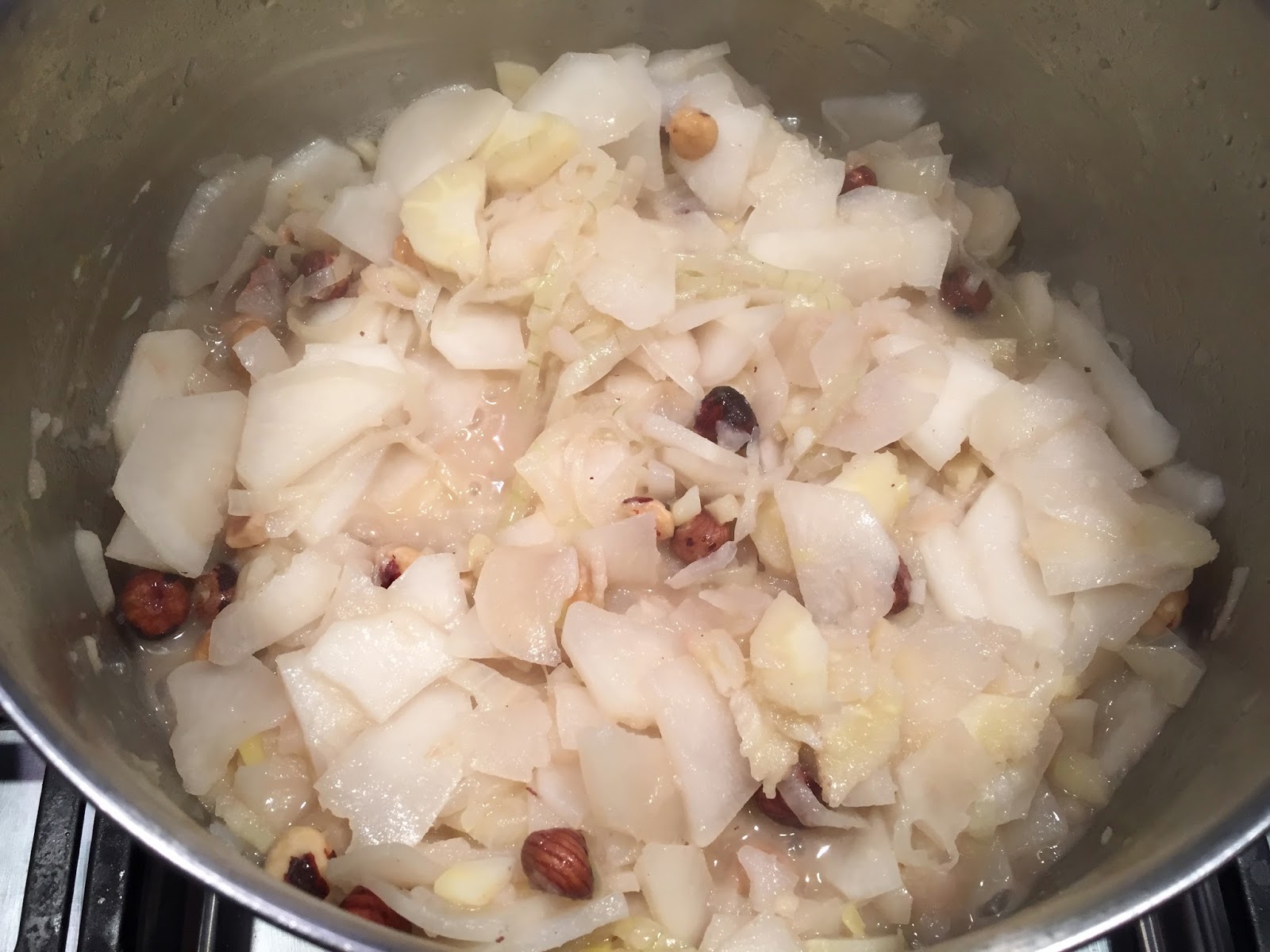I first roasted the squash with some onion slices in a 400 degree oven for an hour. It ends up a bit mushy, so cook yours less if you'd prefer your cubes to be a bit firmer.
During this time, I also cooked the wheat berries. I first went through the wheat berries to pull out any stems, then rinsed them. I cooked 1.5 cups of wheat berries in 4.5 cups of water (1:3 ratio of wheat berries to water or other cooking liquid for the soft white winter wheat; I wanted to use some butternut squash stock instead of water, but it was cooking at the same time as the wheat berries and I didn't want to wait longer to have dinner ready). Once the wheat berries come to a boil, reduce them to a simmer and cook covered for 45 minutes. When they are done, drain off any excess liquid.
I mixed the pecans, dried cranberries, wheat berries, cooked squash, and some cubed feta. When I tasted it, it wasn't quite right. Husband suggested acid. I added two tablespoons of cider vinegar, which really improved the salad.
I served it warm with dinner, then ate it cold with lunches. It worked well both ways.
Husband says he prefers the couscous version.
I served it warm with dinner, then ate it cold with lunches. It worked well both ways.
Husband says he prefers the couscous version.
For those of you counting, I'm now down to 6 butternut squash in the pantry. I roasted two butternut squash while making this salad. I used one for the salad, and I made the other into butternut squash soup by blending the cooked squash with the stock that I made with the squash rinds.
I will be taking a break from cooking butternut squash for a few days now, as I eat the wheat berry salad and soup for lunches.
I will be taking a break from cooking butternut squash for a few days now, as I eat the wheat berry salad and soup for lunches.

















































